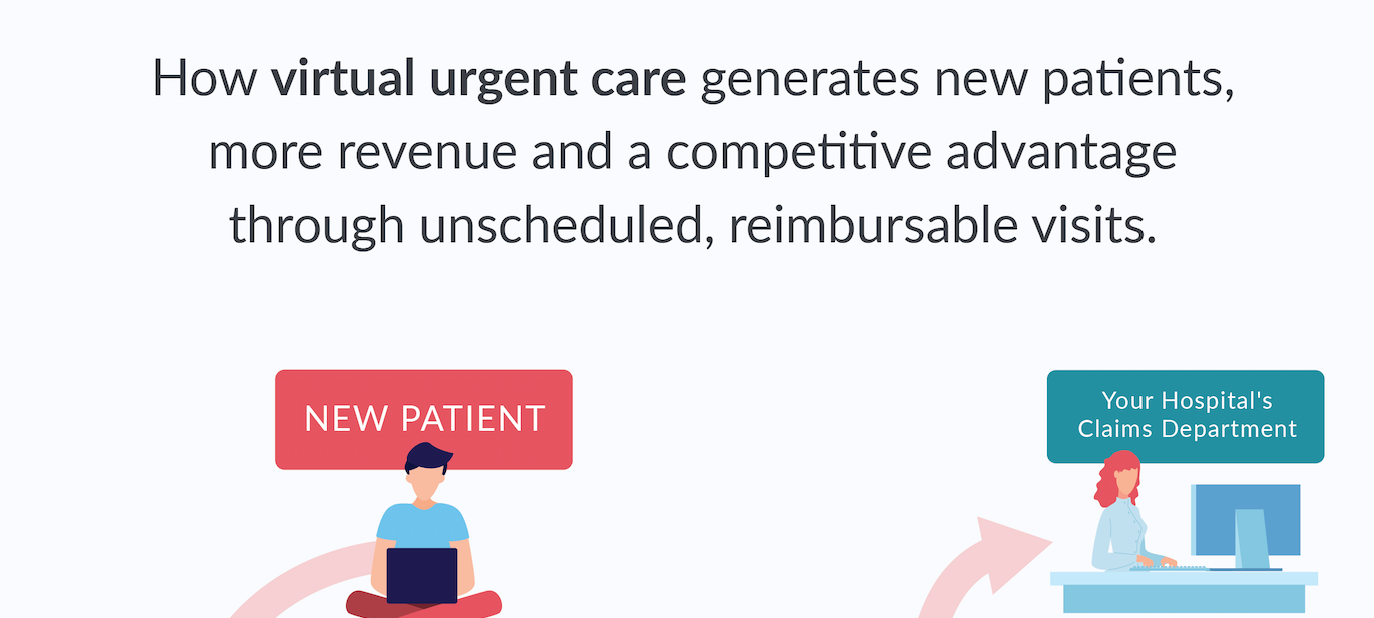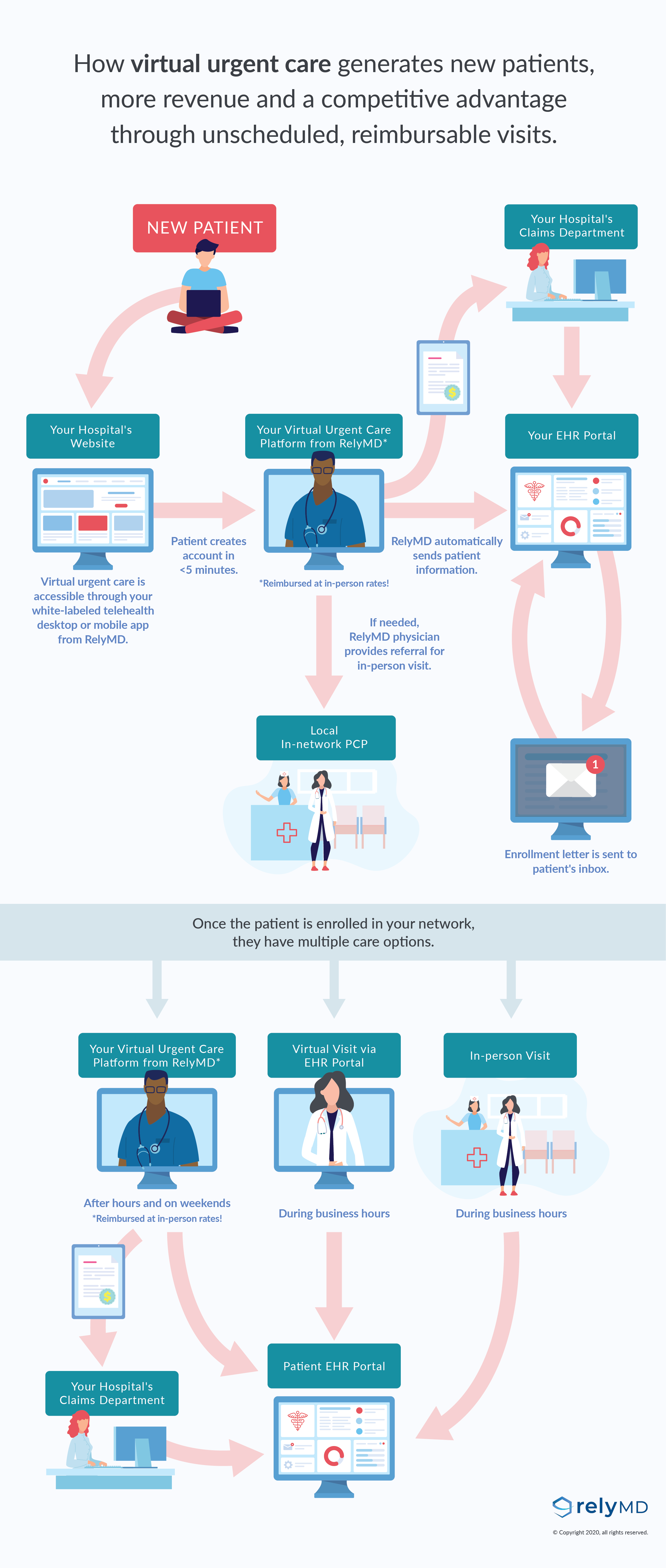
Virtual urgent care for unscheduled visits can increase patient acquisition while also driving more reimbursable business to your existing specialty and primary care services. This infographic clearly differentiates between virtual urgent care and virtual primary care.
We like to think of the two services as patient acquisition vs. patient retention. Virtual urgent care, like RelyMD, acts as a funnel to acquire new patients who need immediate care, who don’t have an existing EHR record on-file, and therefore cannot make an appointment within your existing virtual care service.
The great thing about virtual urgent care is that while it’s the perfect setting for capturing new patients, existing patients can also use the service when they can’t wait for an appointment.
Virtual Primary Care, typically offered within your patient portal, is usually only available to existing patients who don’t need immediate care and can wait for a scheduled virtual appointment. These virtual primary care services are great for maintaining patient/provider relationships and medical record continuity for low-acuity symptoms or medical conditions that require frequent monitoring.
From that brief explanation you can clearly see the difference and benefits that each service brings to a hospital or health system and why often one program cannot do the work of both.
The infographic will show you how they can work together to create an efficient virtual care engine that not only increases patient access, but works to drive more downstream revenue.

Here’s an additional scenario:
A new patient visits your health system’s website and registers to be seen immediately from your virtual urgent care service. Upon completion of his visit, his patient record is created within your EHR via a custom C-CDA feed RelyMD provides. He now has access to a patient portal account.
During his visit, he tells the telehealth physician that he does not have an established primary care doctor, but would like to find one. Together, they locate a nearby physician within your health system’s network and the patient subsequently books a yearly physical.
Throughout the course of 6 months, the patient uses your healthcare services for a number of reasons, including scheduling virtual appointments with his new primary care doctor via the telehealth service available in his patient portal. It’s important to note that because of recent regulatory changes, each virtual visit is now being reimbursed at in-person rates.
For his 5th encounter with your health system, it’s late at night and he needs care now. He signs back into your virtual urgent care service, sees a physician, gets the prescription he needs, and all documentation is updated in his patient record, available for him and his primary care provider.
Together these services worked to capture a new patient, turn him into an established patient, and provided him a convenient option that kept him engaged and happy with your health system’s overall care and ease of navigation. Best of all? Your health system has produced a significant amount of revenue that would have been lost without a virtual urgent care program. The Advisory Board suggests his initial virtual visit could contribute over $3,000 in annual downstream revenue in addition to capturing immediate revenue through reimbursement collections.
Let us help you acquire more patients, capture more revenue, and drive more visits to all of your specialty care services. If you have any questions, please reach out. We can schedule a call with our Chief Medical Officer, Dr. Bobby Park for a deeper dive into virtual urgent care. He’s a great resource available to you.
Case Study
Health System Utilizes Virtual Urgent Care to Lower COVID-19 Exposures
Learn how RelyMD can help your organization
Let our telehealth expert show you how powerful virtual health can be.
Get in Touch
5665 NEW NORTHSIDE DR STE 320
Atlanta, GA, 30328
855-955-0948


